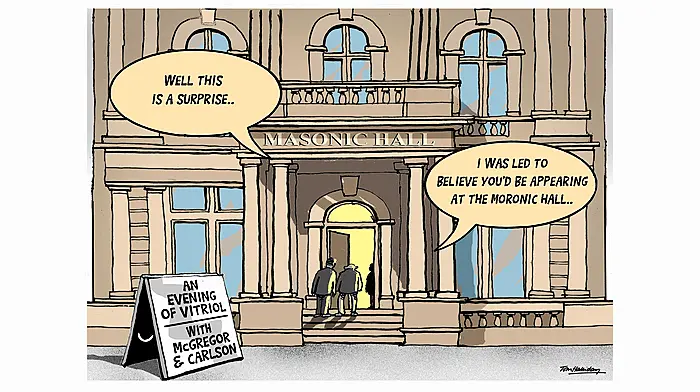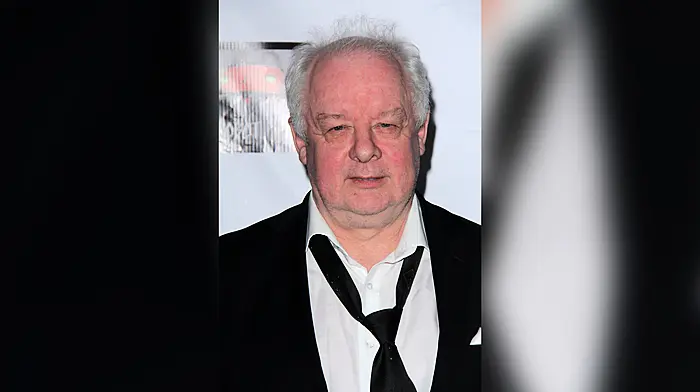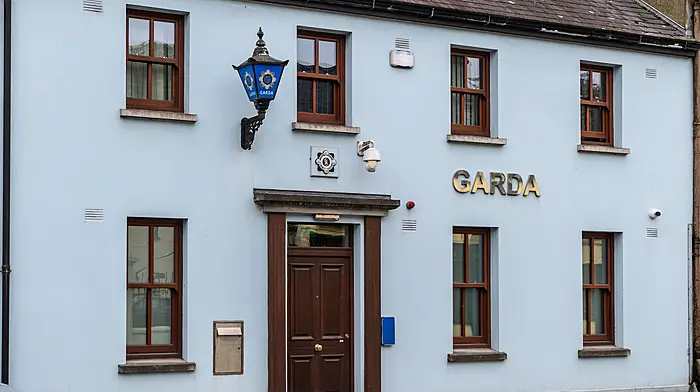A pride in place ensures the shopfronts of the towns of West Cork are a feast of colour that delights tourists and attracts business, writes Mary McCarthy
COLOUR is the virtue. And the delightful interplay of vibrant shopfronts sings a harmony on the streets of West Cork. We are known for it. And many believe the bright shades bring a sense of joy to a visit.
This attractive feature of West Cork’s shopfronts is known by tourists worldwide, according to artist, writer, and curator, Marc O’Sullivan Vallig.
‘In 1901, Eyeries was described as the Siberia of West Cork. It was the bleakest place with far more people than today,’ he said. ‘However, when I grew up in this coastal village, I remember as a child my grandfather’s post office being painted bright blue and had an orange door. Around 1968, local shop fronts were painted with colours resembling abstract art. This was part of the artistic nature of the local people. In the 1970s, house painting changed to dour tones like brown and magnolia that reflected the recession.’
 Evans sweet shop in Bantry with its distinctive frontage. (Photo: Cammy Harley)
Evans sweet shop in Bantry with its distinctive frontage. (Photo: Cammy Harley)
In 1988, Marc’s job was as a house painter. He had an awareness of the power of colour that cheers people up, acting as a benign force that has a positive influence. He painted derelict houses and shop fronts with shades from flowers of the natural world such as fox glove, meadow sweet and montbretia. There was an appreciation of pride in the place and everyone participated in it. This was a Tidy Towns effort. It started a trend in other towns and villages in the region with every shop being painted differently.
‘Tourists were enthralled,’ he said. ‘I remember being asked if I needed a licence to paint like this, because villages in Holland were not allowed. I see it as a celebration of freedom. As a painter, I understood Joseph Alber’s colour theory and how some complemented each other, like red beside yellow, and others clashed, like orange alongside green. The joyful, creative spirit of the community is this expression. It contributes to a sense of belonging to this area.’
‘Signwriters also have a role in shop fronts with their classical understanding of architecture, where proportions matters and harmony exists,’ according to a fourth generation signwriter, Tomás Tuipéar, from Clonakilty.
 An Súgán in Clonakilty: ‘A signwriter’s strength is a perfect eye, because he has learned proportion, balance, and colour,’ says Tomás Tuipéar.
An Súgán in Clonakilty: ‘A signwriter’s strength is a perfect eye, because he has learned proportion, balance, and colour,’ says Tomás Tuipéar.
‘The sign is usually a 10th of the height of the shop front. In times gone by, when illiteracy was prevalent, people knew shops by their colour and the style of lettering. The Lawrence photograph collection of the 1890s shows streetscapes of all shopfronts in towns of Ireland with orderly proportions.
‘An apprentice learns calligraphy with its narrow and wide strokes and the classic Roman letters and script. What is seen on the street is reflected inside like the gold leaf lettering of a jewellers. Enamel gloss paint is used for signwriting with sable hair brushes. Successful signs have proportion and an aesthetic taste.’
There was an unfortunate change in the 1960s with the introduction of plastic light boxes and plywood, he recalls. Bad taste happened, because all proportions were lost, ending the Greek and Roman aesthetic look.
‘Spending on good signage pays for itself in accumulating profits long after the signwriter has been paid,’ says Tomás. ‘A signwriter’s strength is a perfect eye, because he has learned proportion, balance, and colour.’
Bookstór in Kinsale forms part of the view of Newman’s Mall. The bookshop has always been painted purple with black since it opened its door for business almost 20 years ago. The colours are a brand in themselves according to Heather Maiden, a shop manager.
 US tourist Andrew Kearney Robinson was drawn to Bookstór, Kinsale. ‘I wanted to find a book for my mother. It was the font of the sign that grabbed my attention. It is the first bookshop I noticed since arriving on holiday.’ (Photo: Mary McCarthy)
US tourist Andrew Kearney Robinson was drawn to Bookstór, Kinsale. ‘I wanted to find a book for my mother. It was the font of the sign that grabbed my attention. It is the first bookshop I noticed since arriving on holiday.’ (Photo: Mary McCarthy)
‘It is part of the bright and colourful streetscape that makes this town quaint,’ she said. ‘Colour adds something that is different to the red bricks of Edinburgh or Glasgow. Tourists like it, because it uplifts and enriches their experience of the place, whether their interests are local history, yachts, or the sea.’
‘Apart from tourists taking photos outside, the shop front encourages people to come in and browse,’ she said. People notice it. At the counter, Heather asked a customer why did he come into the shop. Andrew Kearney Robinson in his 30s, a scientist from Las Vagas said, ‘I came to Ireland for a friend’s wedding. I wanted to find a book for my mother. It was the font of the sign that grabbed my attention. It is the first bookshop I noticed since arriving on holiday.’
‘Colour and signs make shops distinctive,’ Heather concluded, ‘attracting customers that add value to business and the town.’









